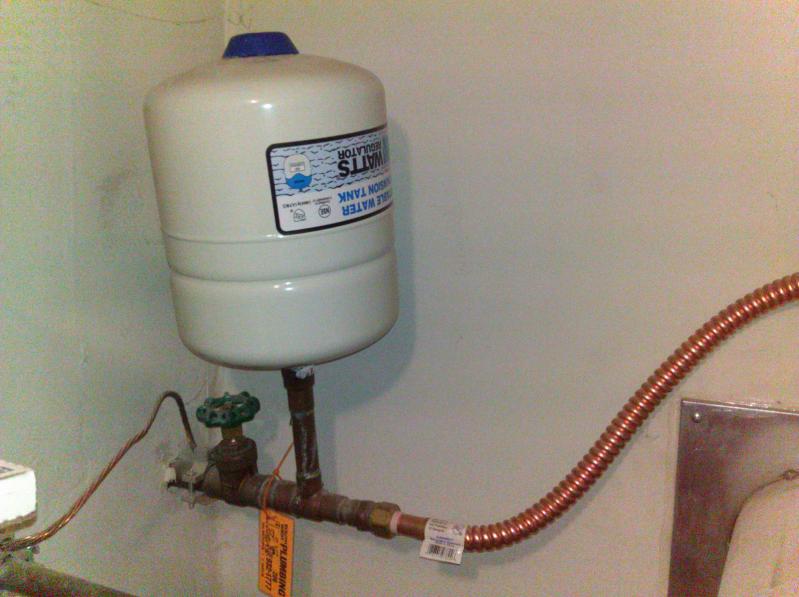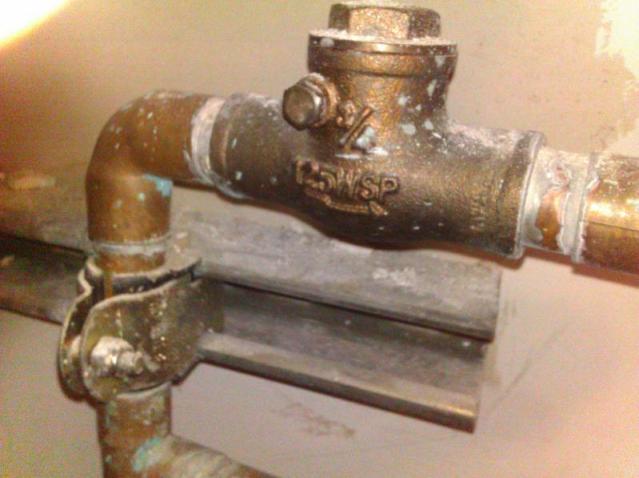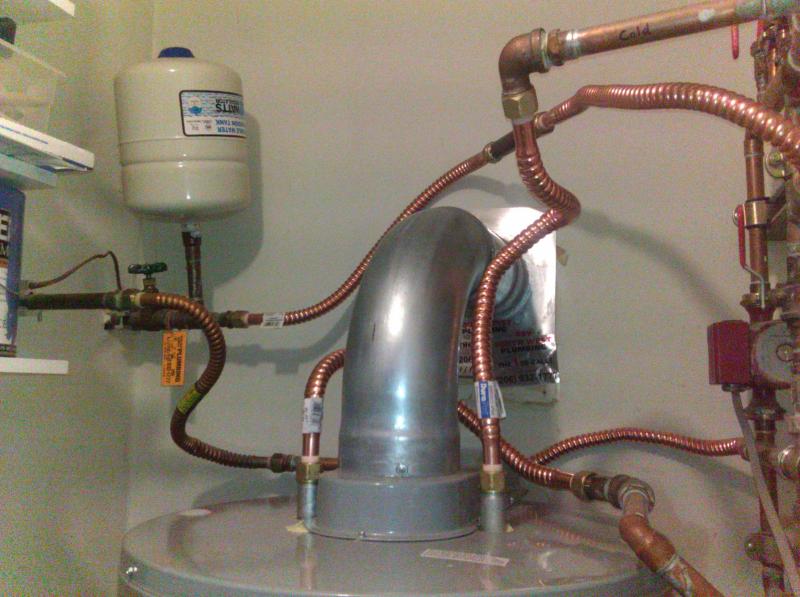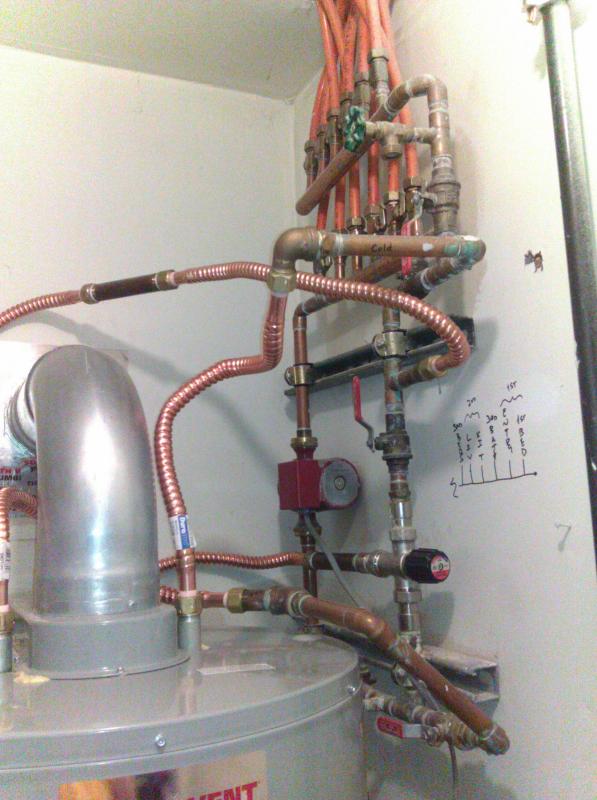SteveRiley
New Member
I am unsure of whether my symptoms reveal two problems or if they're related. Anyway...
Friday morning, my wife complained of no hot water for the shower. When I went to investigate the water heater, I noticed a small puddle surrounding it, a circle approximately two inches wider than the base of the heater. I peeked into the pilot light viewport and saw that the light was out. I re-ignited it, waited a minute, then switched on the burner. The burner lit, and then extinguished, along with the pilot light.
Thinking I had a leak of some kind, I called the company that installed the system in January 2008. The plumber removed the door at the base of the heater and noticed standing water. He vaccuumed out about one third of a gallon, he estimated. He waited a bit and noticed no leaks. He lit the burner and let it run for a while. Again, no leaks. We discussed the situation, and he concluded that the problem is condensation, because the heater is sitting directly on a concrete floor and can't get enough air for combustion. He said to keep an eye on it, and if the problem returns, they'll come install a stand to raise the heater to improve airflow. This would not be covered by the heater's warranty, of course, and I'd have to "pay a little bit."
On Saturday I noticed some water around the heater again. And on Sunday, my wife's shower ran out of hot water. I opened the door on the heater and -- sure enough -- the problem had returned.
I have spent a few hours reading through various posts on several forums and have concluded that the condensation diagnosis is wrong. The volume of water just seems too great, and why would I just now have a condensation problem?
Possibly related (or not), for a few weeks now, I've noticed that very hot water will come out of our faucets when the cold side is opened. This happens if no water water has been flowing through the house plumbing system for a few hours. I mention this second symptom because I don't know if the two are related.
Here is a diagram of my hot water system:

The expansion tank, installed at the same as the water heater:

The check valve; this is the original valve that came with the house, built in early 2002:

And the tank itself. Note that the T&P valve is piped outside:

When I looked outside, there was no water where the pipe exits the house.
Now for my questions.
Why is hot water entering the cold water pipes? Isn't the check valve supposed to prevent that backflow? I'm wondering whether the valve is damaged. The valve is now 10 years old. When I tap the side of the expansion tank, it rings hollow for the upper 75% of its height. Water does not spurt out of the Schrader valve. The pressure at the valve is 65 psi. I have not depressurized the system to check the tank's pressure in that state. I suspect the tank is OK.
Where could the water in the bottom of the tank be coming from? Do T&P valves leak inside the space between the heater's jacket and internal tank?
I am somewhat reluctant to call this plumbing company again until I have a better understanding of possible causes. Thank you for reading this post, I know it's long, but I wanted to ensure I covered all the details.
Friday morning, my wife complained of no hot water for the shower. When I went to investigate the water heater, I noticed a small puddle surrounding it, a circle approximately two inches wider than the base of the heater. I peeked into the pilot light viewport and saw that the light was out. I re-ignited it, waited a minute, then switched on the burner. The burner lit, and then extinguished, along with the pilot light.
Thinking I had a leak of some kind, I called the company that installed the system in January 2008. The plumber removed the door at the base of the heater and noticed standing water. He vaccuumed out about one third of a gallon, he estimated. He waited a bit and noticed no leaks. He lit the burner and let it run for a while. Again, no leaks. We discussed the situation, and he concluded that the problem is condensation, because the heater is sitting directly on a concrete floor and can't get enough air for combustion. He said to keep an eye on it, and if the problem returns, they'll come install a stand to raise the heater to improve airflow. This would not be covered by the heater's warranty, of course, and I'd have to "pay a little bit."
On Saturday I noticed some water around the heater again. And on Sunday, my wife's shower ran out of hot water. I opened the door on the heater and -- sure enough -- the problem had returned.
I have spent a few hours reading through various posts on several forums and have concluded that the condensation diagnosis is wrong. The volume of water just seems too great, and why would I just now have a condensation problem?
Possibly related (or not), for a few weeks now, I've noticed that very hot water will come out of our faucets when the cold side is opened. This happens if no water water has been flowing through the house plumbing system for a few hours. I mention this second symptom because I don't know if the two are related.
Here is a diagram of my hot water system:

The expansion tank, installed at the same as the water heater:

The check valve; this is the original valve that came with the house, built in early 2002:

And the tank itself. Note that the T&P valve is piped outside:

When I looked outside, there was no water where the pipe exits the house.
Now for my questions.
Why is hot water entering the cold water pipes? Isn't the check valve supposed to prevent that backflow? I'm wondering whether the valve is damaged. The valve is now 10 years old. When I tap the side of the expansion tank, it rings hollow for the upper 75% of its height. Water does not spurt out of the Schrader valve. The pressure at the valve is 65 psi. I have not depressurized the system to check the tank's pressure in that state. I suspect the tank is OK.
Where could the water in the bottom of the tank be coming from? Do T&P valves leak inside the space between the heater's jacket and internal tank?
I am somewhat reluctant to call this plumbing company again until I have a better understanding of possible causes. Thank you for reading this post, I know it's long, but I wanted to ensure I covered all the details.


















![MEISTERFAKTUR drain snake 2.0 [50 FT] - with drill attachment - Ideal plumbing snake for sink and drain unblocking - Solid drain auger for real DYIs! (50 FT - 1/4 inch)](https://m.media-amazon.com/images/I/41VwmTiOsgL._SL500_.jpg)







































